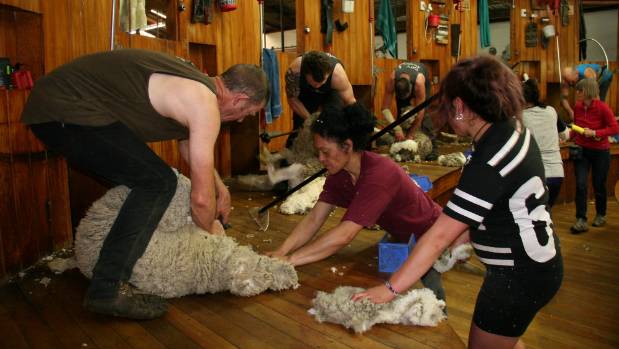Shearer shortage impacts on Australia & NZ woolgrowers
Australia’s shearing contractors and wool producers fear a national shearer shortage with COVID-19 border closures and travel restrictions, making it difficult for New Zealand shearers to enter Australia. Every August an influx of 500 shearers from New Zealand arrive in Australia primed for spring shearing — but not this year. They handle at least seven million sheep over three months and head home to New Zealand for their own season in December.
Shearing Contractors Association of Australia (SCAA) secretary Jason Letchford said the looming workforce shortage was a major concern for the industry. “We are really in a desperate situation to get the sheep shorn this year in spring,” Ms Letchford said.
He said if sheep were not shorn in time, the season would be extended, which would cause financial losses for producers and also pose a risk to animal welfare. “If you don’t have good animal husbandry practises you lose your asset,” he said.
The SCAA is working with the Department of Agriculture, Home Affairs and state governments to find an agreement on New Zealand shearers coming to Australia. Mr Letchford believed a fast and proper solution was needed. “I realise that the governments are walking this very narrow band between safety and keeping the virus at stake, but there are jobs and commercial issues at stake,” he said.
“It can’t just be a blanket approach where we turn of the tap in one area and it has unintended consequences across other industries. At this point in time with the $3,000 entry for quarantining and actually getting through an Australian port is making it look unlikely any will be able to come across.”
Mr Letchford said with the drought breaking in many parts of Australia the national sheep flock was only set to surge from the current 65 million head as farmers look to rebuild and retain more stock and more shearers would be needed.
Craig Gilbert, who runs Woolaway Contract Shearing in Naracoorte, South Australia, feared he might not be unable to secure a full workforce if the agreements for NZ shearers entering Australia did not change.
His business brings half of its staff into the area as seasonal workers from interstate and overseas, but he might have to work with a skeleton workforce and ask growers for more flexible shearing arrangements.
“We simply don’t have the numbers of shearers here in Australia to cover all that to get it done in the time frames that growers require,” Mr Gilbert said.
“If the sheep need to get shorn and they don’t get shorn that will have a significant impact on the area, on growers and on their price and on the wellbeing of the animals.”
“It’s not just like you can say we are going to shear your sheep in December instead of October. Of course the season changes, and it gets a bit hotter, the animals can suffer from grass seeds, they can suffer from flies, and that’s distressing for the animal.”
New Zealand also fears their own shearer shortage
But it’s not only Australia’s shearing sheds that are short-staffed. New Zealand’s industry also fears a workforce shortage for its peak season starting from November to March, when usually shearers from Australia and the UK flock to the nation.
New Zealand Shearing Contractors Association president Mark Barrowcliffe said a delay of their season was on the cards and despite talks with their Department of Immigration there were additional challenges to bring overseas shearers into the country.
“We want to do it faithfully for the employee and whatever country they are coming to or are leaving from.”
While the industry remained hopeful about their discussions with the Department of Immigration, Mr Barrowcliffe said they were also upskilling local stuff to partly pre-empt the looming shortage.
However, with the situation of New Zealand shearers heading to Australia, he believed there was a ‘bigger reluctance’ from workers due to the increasing coronavirus cases in Australia.
“We are a very family-orientated industry, so once you move away from your family at the moment, you can’t just pop back quickly if something happens, and the family coming first is definitely keeping a few people at home,” he said.
“They are just not prepared to risk their own communities or risk not being able to attend and event if something happened.”
Source: ABC Rural


